
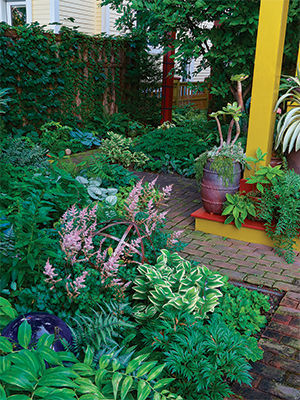
I am a plant collector, and I have a “collector’s garden.” In gardener-speak, that is code for acknowledging I have lots of plants (some would say too many) wedged to within an inch of their lives in the garden. And perhaps I have too many variations of one type of plant, the subtleties of which most would never notice. The problem is that I am also a landscape architect. Professionally, I would rarely design a client’s garden with the variety of plants I have in my small garden, as I know too much variety can lead to chaos in a one-of-everything garden.
For a client’s garden, I start with a list of plants that will work, considering soils, sun exposure, moisture, blossom color, foliage color, form, and height within an overarching vision. The list is often long, but I pare it down knowing that the design will be better for it. When it comes to my own garden, I simply cannot restrain the palette. I spend winters online perusing specialty nurseries for the latest and greatest plants I am positive I just cannot live without. I place my orders knowing I don’t have space for the 10 plants in the online shopping cart. Then spring arrives. I wander the garden, latest plant purchase in hand, wondering “Where is this poor thing going to go?”
So how have I resolved this seemingly insurmountable problem? Buy fewer plants? That’s not happening. Quite simply, I rely on the few basic design tools I use every day when creating someone else’s garden.
Plenty of room for plants
From above, the lines of the garden, and the order they impart, are clear.
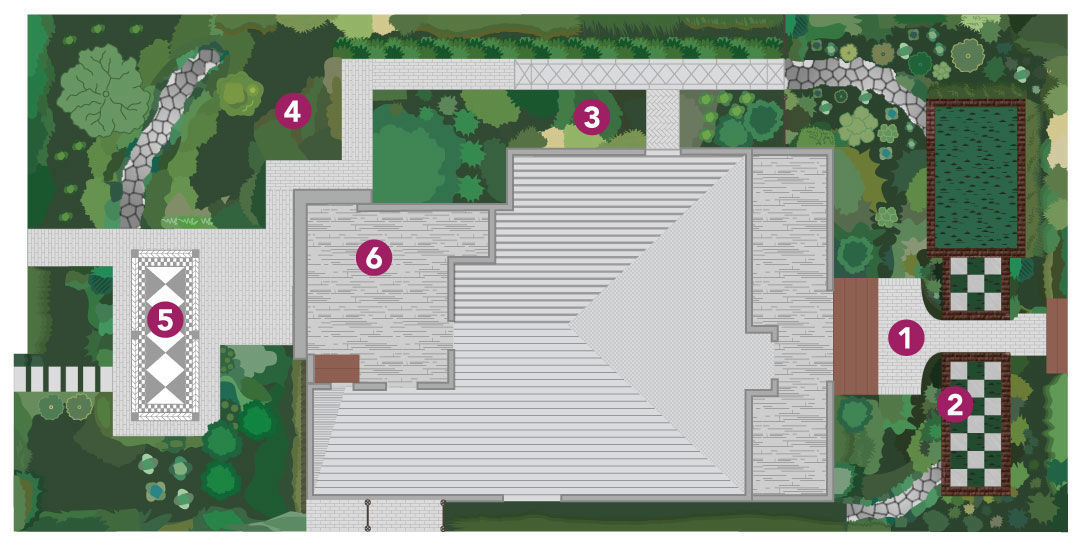
- Front garden
- Chocolate Chip ajuga
- Side garden
- Back garden
- Dining area
- Back porch
Start with a strong framework
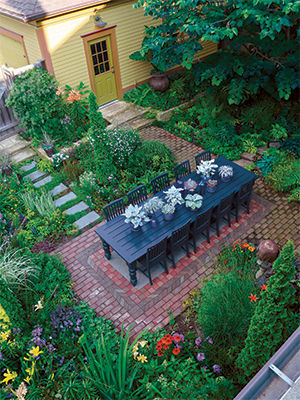
Every garden benefits from a strong framework to define it, a collector’s garden even more so. A strong, simple framework organizes the garden spaces so that they can accommodate an overabundance of plant varieties. Frameworks can either be built structures— for example, a stone garden wall—or they can be formed from plant material, such as a clipped boxwood hedge. My garden is defined by stone walls, stone and paver walks, wood fences, and strategically placed garden ornaments. I have designed these elements straight and rectilinear to play against the loose nature of the plants.
I have also kept the palette of these elements simple by repeating materials. The trim colors on the house appear on the fence, pavers used for the front walk are repeated in the backyard but in a different pattern, and a local limestone is used for all of the low garden walls and steps. The key is that a continuity in the framework carries throughout the garden so that I can have the variety where I want it—in the plant choices.
Strive for balance, not a mirror image
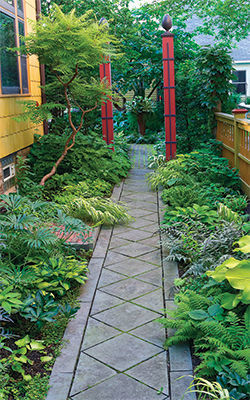
As a plant nerd I am always trying to grow as many types of plants as possible, but my designer self keeps nagging me to do so without creating visual chaos. Achieving visual balance with a variety of plants can be challenging. One easy trick is to use different plants that are similar in form. As an example, the front yard of our city lot is divided by the walk leading up to the front porch. Two colum nar shrubs flank this walk. Overall, this creates a traditional and symmetrical front entry. However, rather than replicate this with symmetrical plantings marching down each side of the walk, I have chosen to use different plants with similar forms on each side. Here, the vertical stems of Asiatic lilies (Lilium spp. and cvs., Zones 4–10) are mirrored by a grouping of tall calla lily (Zantedeschia spp. and cvs., Zones 7–10) leaves on the opposite side of the walk, and the mounded form of a Crimson Fans mukdenia (Mukdenia rossii ‘Karasuba’, Zones 4–8) is repeated by the mounded but much finer sedge (Carex spp. and cvs., Zones 3–10) foliage directly opposite it. The overall effect is one of visual balance, with the added benefit that I am able to grow twice the variety of plants I could if I had simply used the identical plant on each side to create balance.
Also flanking the entry walk are two checkerboard gardens comprised of 16-inch square stones and Chocolate Chip ajuga. On one side, the checkerboard pattern fills the center of the garden. On the other side, the checkerboard pattern is smaller and serves as the entrance to the lawn panel inset within the garden. The two sides are related and visually balanced, but they are not identical.
Use color to your advantage
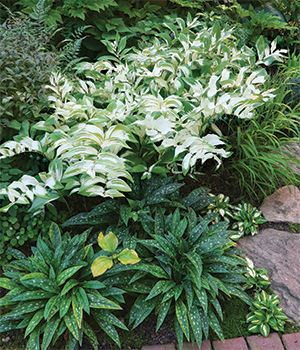
Color plays a vital role in my garden, and I have selected a color palette for each garden room. Some of that color comes from the succession of seasonal blossoms, but just as important, if not more so, are foliage colors. In general, I have organized the garden so that the foliage in the front garden room includes greens, grays, and blues, with the occasional white in variegated foliage. Flowers tend toward pinks, blues, and white, with hints of yellow. As you step into the side garden through the columns that flank the walk, the foliage dramatically shifts to yellows, chartreuses, bright greens, and some “blacks” for contrast. Flowers tend toward oranges and dark yellows, with a sprinkling of deep purples, all of which look great with the brighter foliage colors. After you leave the side garden, the foliage returns to dark greens and blue-grays, and the flowers include yellows, blues, and accents of white.
Focusing the foliage and flower colors in each room creates a distinct identity for each space. The side garden feels unique because of the bright yellowish green foliage, but even more so because the garden on either side is different, with darker foliage. Framework elements, in this case a fence and entry columns, delineate where the color palette changes. This is not unlike how one treats the interior of a house. A mishmash of colors in every room would likely be busy and chaotic. Rather, the dining room is one palette, the living room another, and so on. Doors and walls, the framework, define the rooms.
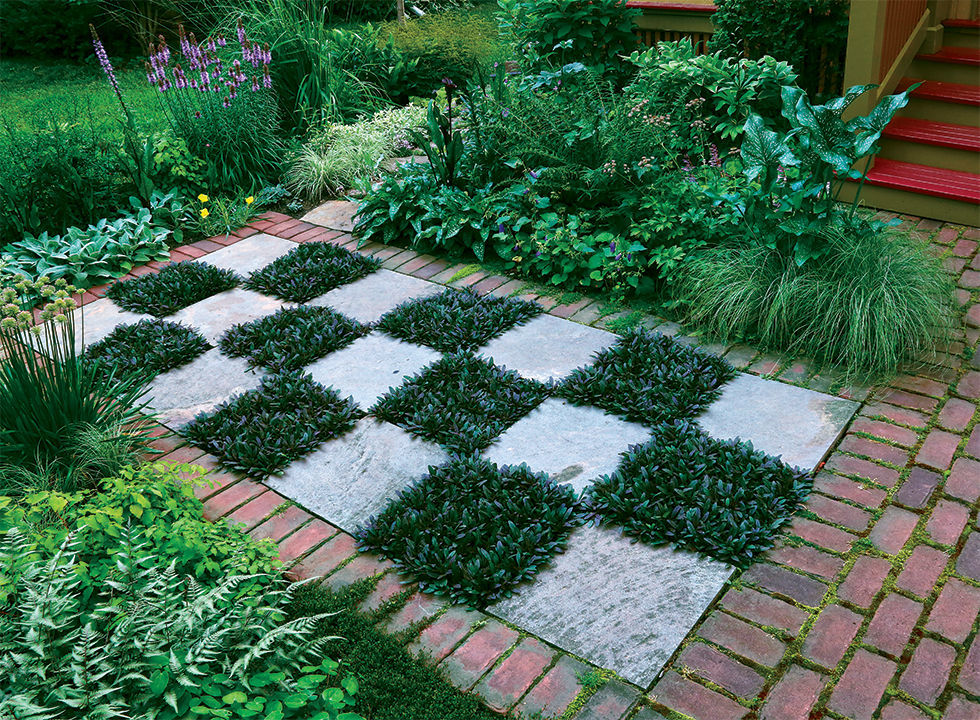
Flowers are more or less fleeting. You might get two or three weeks of flower color out of a perennial. What is left after the blossoms are gone? Foliage. I consider foliage color every time I place a new plant. How will the foliage of one plant relate to that of the plants around it? For example, I have numerous ferns and hostas, but I have not grouped them in a fern garden or a hosta garden because texturally that would be boring. The lacy foliage of one fern next to the lacy foliage of another would not show off the beauty of that delicate green filigree. Rather, I mix my many fern varieties throughout the garden, considering how the fine foliage can be used to advantage mingling with a hosta or brushing up against a large heart-shape brunnera leaf.
I continue to collect plants. I write this just having visited a nursery where I picked up three plants that are new to me. Now where to plant them?
Plants
Ooh, What’s That?
When wandering around a plant collector’s garden, you’re certain to uncover more than a few gems. Here are some highlights from Frank’s garden.
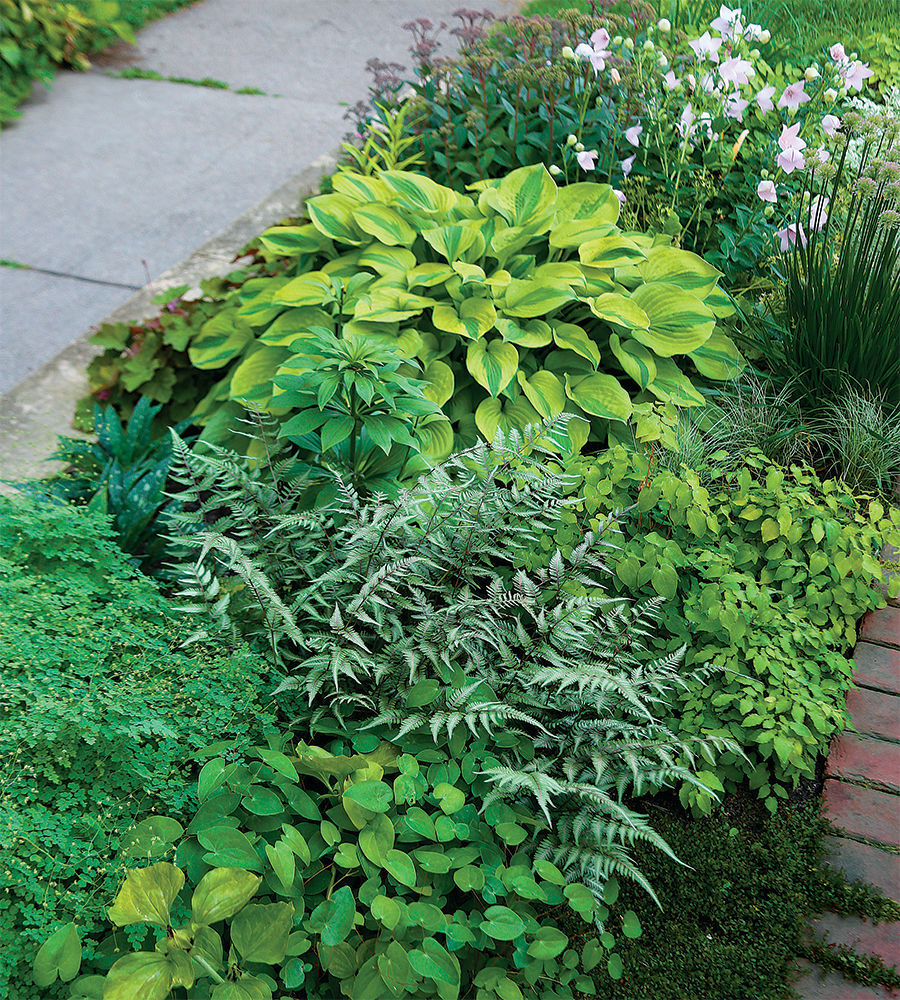
1. ‘Edge of Night’ calla lily (Zantedeschia ‘Edge of Night’)
2. ‘Lightning strike’ toad lily (Tricyrtis hirta ‘Lightning Strike’)
3. ‘Lovely’ sinningia (Sinningia ‘Lovely’)
4. Dwarf meadow rue (Thalictrum kiusianum)
|
5. Autumn Charm sedum (Hylotelephium ‘Lajos’)
6. ‘Pippa’s Purple’ hellebore (Helleborus × iburgensis ‘Pippa’s Purple’)
7. ‘sea Monkey Purple’ coleus (Plectranthus scutellaroides ‘Sea Monkey Purple’)
8. ‘Encourage’ lady fern (Athyrium filix-femina ‘Encourage’)
|
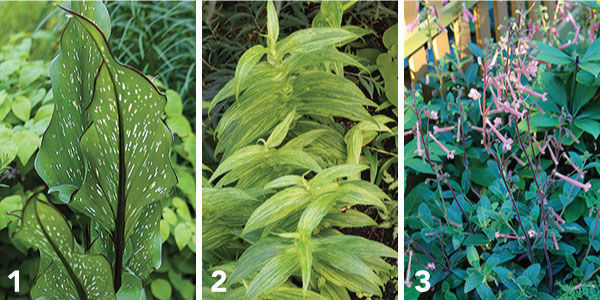
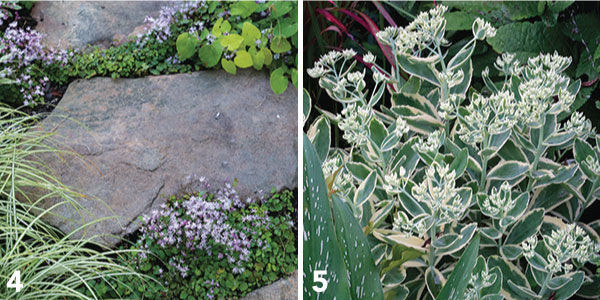
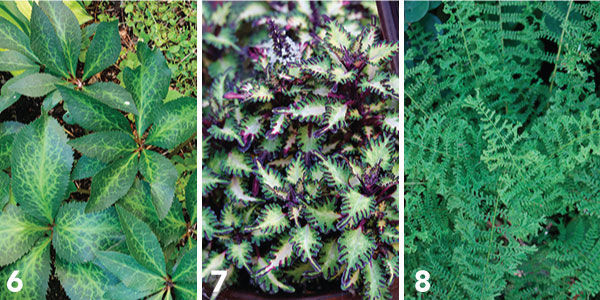
Frank Fitzgerald is a landscape architect in Minneapolis.
Photos: Steve Aitken. Illustration: Conor Kovatch.
Fine Gardening Recommended Products

SHOWA Atlas 370B Nitrile Palm Coating Gloves, Black, Medium (Pack of 12 Pairs)
Fine Gardening receives a commission for items purchased through links on this site, including Amazon Associates and other affiliate advertising programs.

Buffalo-Style Gardens: Create a Quirky, One-of-a-Kind Private Garden with Eye-Catching Designs
Fine Gardening receives a commission for items purchased through links on this site, including Amazon Associates and other affiliate advertising programs.

Planting in a Post-Wild World: Designing Plant Communities for Resilient Landscapes
Fine Gardening receives a commission for items purchased through links on this site, including Amazon Associates and other affiliate advertising programs.



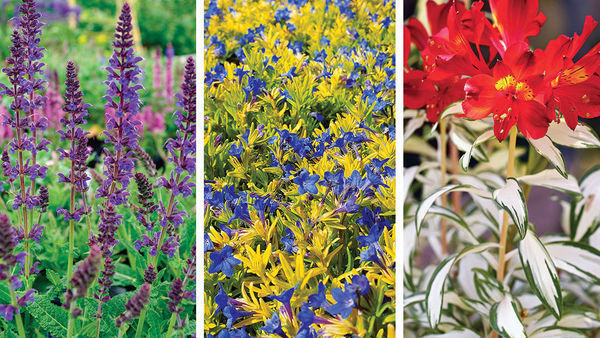

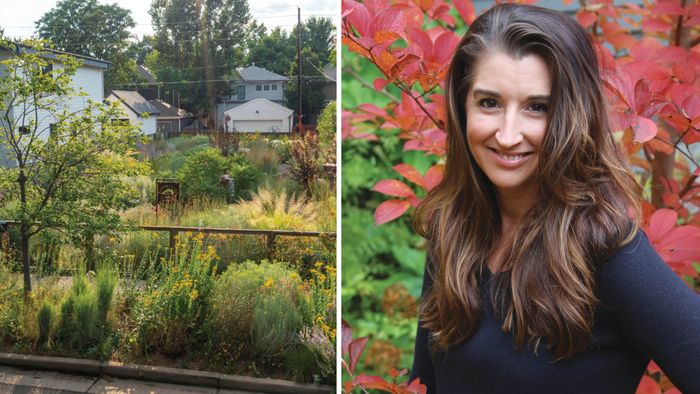












Comments
Log in or create an account to post a comment.
Sign up Log in